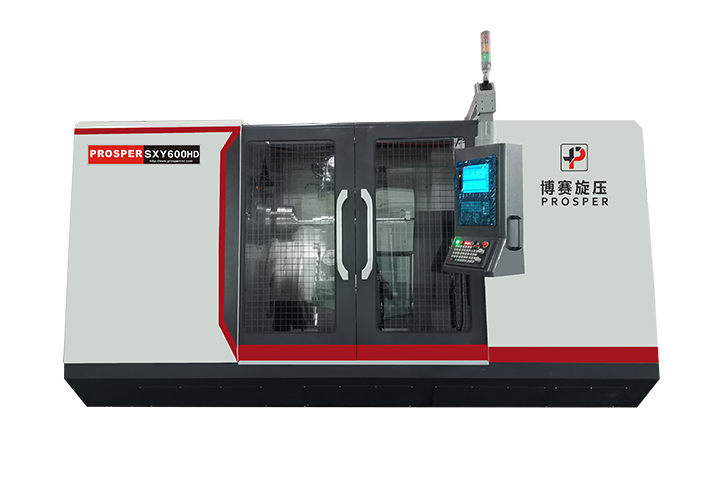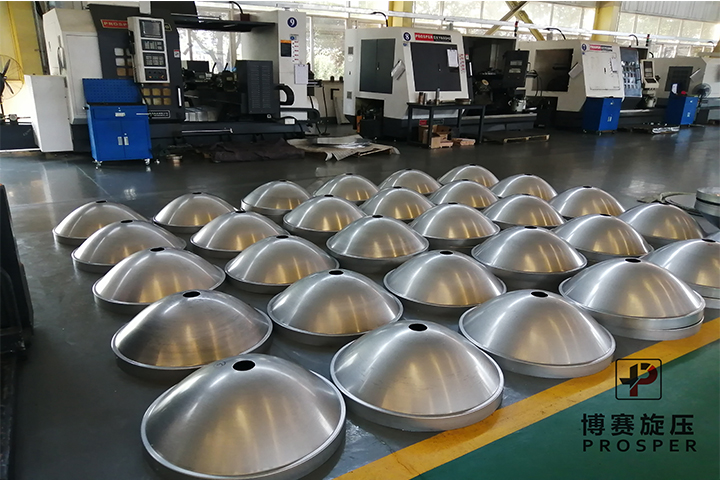Metal Spinning Technology--Wall Thickness Accuracy of Workpiece
Date: Aug,26 2020 View:
Metal Spinning Technology--Wall Thickness Accuracy of Workpiece
The wall thickness deviation refers to the difference between the actual size of the wall thickness and the nominal size, and the allowable range is expressed in the form of positive and negative deviations. The wall thickness difference usually also reflects the coaxiality error and roundness error of the inner and outer surfaces of the workpiece.
Both cylindrical parts and special-shaped parts have the problem of wall thickness deviation, and the influencing factors are basically the same, mainly:
(1) The quality of the blank. The wall thickness difference of the blank itself will be reflected on the workpiece through the elastic deformation of the spinning process system. Therefore, the large wall thickness difference of the blank will also lead to the large wall thickness difference of the workpiece. In addition, the uniformity of the structure and properties of the blank material will also affect the size of the workpiece wall thickness difference.
(2)Spinning process parameters. The thinning rate and feed rate during spinning have an important influence on the wall thickness deviation. When the thinning rate is less than 30%, the influence on the wall thickness deviation is not obvious, but when the thinning rate is more than 30%, the wall thickness deviation increases with the increase of the thinning rate. For a certain thinning rate, the more spinning times to achieve this thinning rate, the greater the deviation of the wall thickness of the workpiece. The wall thickness deviation of the workpiece generally increases with the increase of the feed rate. In fact, there is an optimal value of the feed rate. If the feed rate is lower than this optimal value, the wall thickness deviation will still increase.
(3) Process equipment. The amount of runout of the mandrel to the spindle of the spinning machine will directly affect the wall thickness difference of the spinning part. Among the structural parameters of the working surface of the roller, only the working arc radius of the roller has an influence on the wall thickness deviation. When the cone is spinning, the working arc radius of the roller can be increased to reduce the wall thickness deviation.
(4) Adjust the gap between the roller and the core mold. When spinning, the actual gap between the spinning roller and the core mold will determine the actual wall thickness of the spinning part. Since the spinning process system has a concession function during the spinning process, the material will rebound after spinning, so these factors must be considered when adjusting the gap, otherwise a large wall thickness deviation will occur.
The maximum accuracy of wall thickness deviation currently achievable is ±0.005mm. The wall thickness accuracy of powerful spinning parts can usually be controlled within ±0.03~±0.05mm. If the equipment and process conditions are strictly controlled, it can reach below 0.01mm. According to German data, the wall thickness difference of the spinning charge is 0.01mm, the wall thickness difference of the spinning combustion chamber is 0.1mm, and the wall thickness deviation specified by the spinning charge in China is (±0.05~0.10)mm, burning The chamber is ±(0.15~0.25)mm, and the thin-walled engine housing is ±0.05mm.
In summary, the measures to improve the accuracy of the workpiece wall thickness are
①Improve the processing and installation positioning accuracy of the blank; ②Improve the processing and installation accuracy of the core mold and the roller; ③By adjusting and partially trimming the profile plate and adjusting the appropriate gap between the roller and the core mold;⑤Appropriately increase the number of spinning passes; ⑥Do not use too large positive or negative deviation value during shear spinning.








